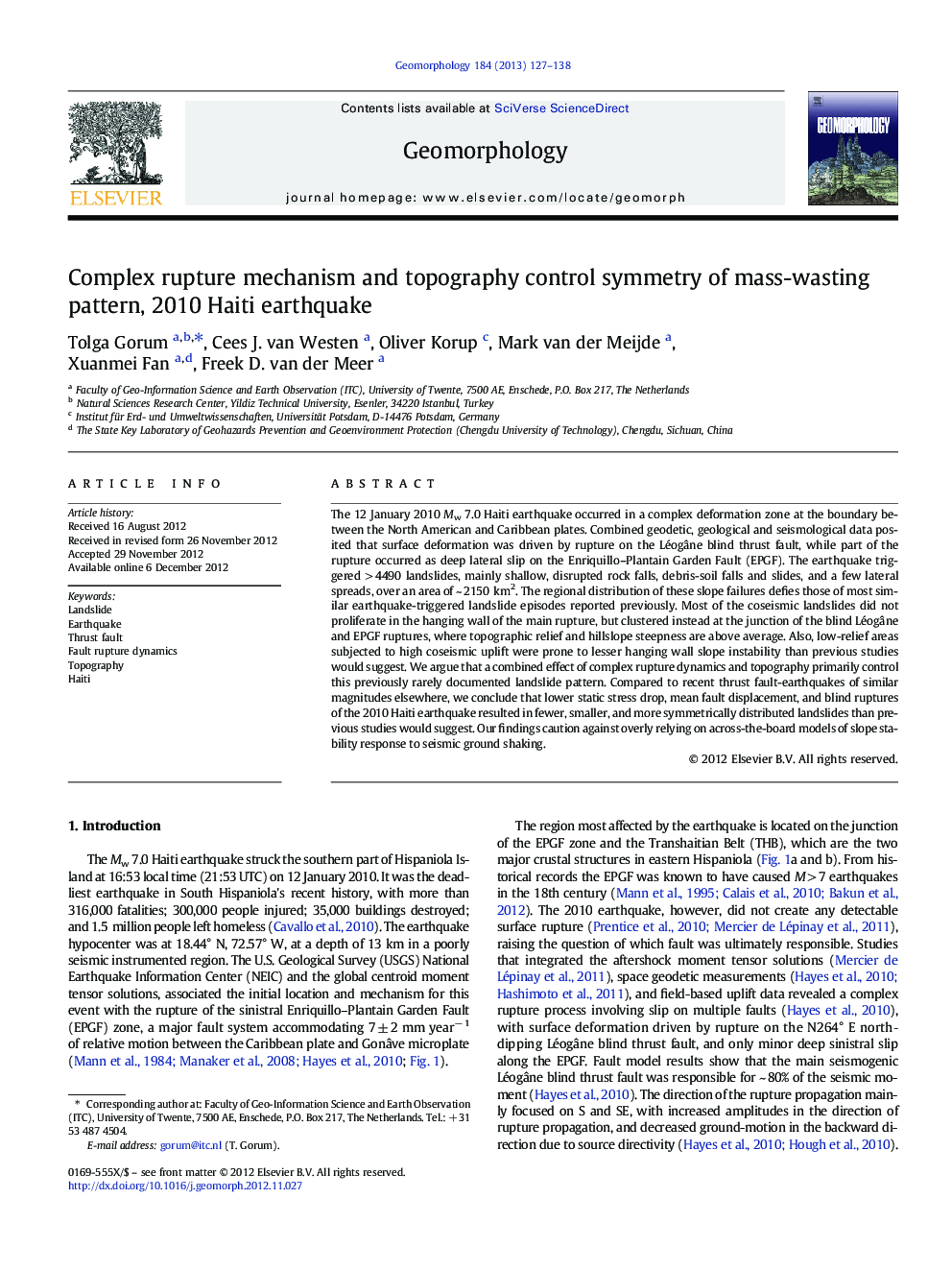| Article ID | Journal | Published Year | Pages | File Type |
|---|---|---|---|---|
| 4684957 | Geomorphology | 2013 | 12 Pages |
The 12 January 2010 Mw 7.0 Haiti earthquake occurred in a complex deformation zone at the boundary between the North American and Caribbean plates. Combined geodetic, geological and seismological data posited that surface deformation was driven by rupture on the Léogâne blind thrust fault, while part of the rupture occurred as deep lateral slip on the Enriquillo–Plantain Garden Fault (EPGF). The earthquake triggered > 4490 landslides, mainly shallow, disrupted rock falls, debris-soil falls and slides, and a few lateral spreads, over an area of ~ 2150 km2. The regional distribution of these slope failures defies those of most similar earthquake-triggered landslide episodes reported previously. Most of the coseismic landslides did not proliferate in the hanging wall of the main rupture, but clustered instead at the junction of the blind Léogâne and EPGF ruptures, where topographic relief and hillslope steepness are above average. Also, low-relief areas subjected to high coseismic uplift were prone to lesser hanging wall slope instability than previous studies would suggest. We argue that a combined effect of complex rupture dynamics and topography primarily control this previously rarely documented landslide pattern. Compared to recent thrust fault-earthquakes of similar magnitudes elsewhere, we conclude that lower static stress drop, mean fault displacement, and blind ruptures of the 2010 Haiti earthquake resulted in fewer, smaller, and more symmetrically distributed landslides than previous studies would suggest. Our findings caution against overly relying on across-the-board models of slope stability response to seismic ground shaking.
► The January 12, 2010, Haiti earthquake (Mw 7.0) triggered nearly 4500 landslides. ► The combined effect of rupture dynamics and topography control the landslide pattern. ► Blind rupture-earthquakes induced fewer landslides than surface rupture-earthquakes. ► Blind rupture-earthquakes induced smaller landslides than surface rupture ones.
